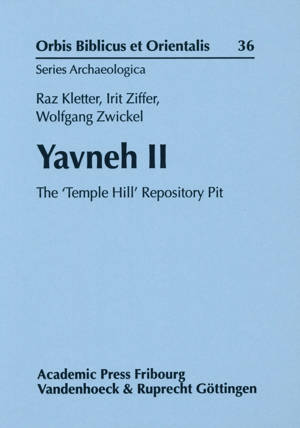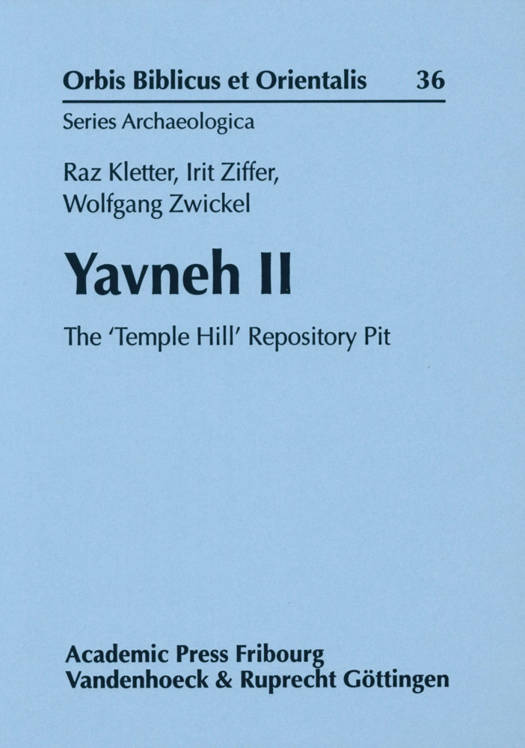
- Afhalen na 1 uur in een winkel met voorraad
- Gratis thuislevering in België vanaf € 30
- Ruim aanbod met 7 miljoen producten
- Afhalen na 1 uur in een winkel met voorraad
- Gratis thuislevering in België vanaf € 30
- Ruim aanbod met 7 miljoen producten
Zoeken
Yavneh II
The 'Temple Hill' Repository Pit
Hardcover | Engels | Orbis Biblicus et Orientalis. Series Archaeologica | Orbis Biblicus et Orientalis, Series Archaeologica | nr. 36
€ 233,95
+ 467 punten
Omschrijving
Yavneh II is the second and last excavation report on the dramatic favissa/genizah pit full of Philistine votive objects, discovered by Raz Kletter in the city of Yavneh, Israel, near the Mediterranean coast (south of Tel Aviv). The first volume, Yavneh I (OBO.SA 30, 2010) included studies on the history and archaeological exploration of Yavneh, the excavation, the stratigraphy and the interpretation of the pit as a favissae of votive objects that originate from a public temple; but especially on the mysterious cult stands, which number more than a hundred and include many stands with zoomorphic and anthropomorphic figures. In the present volume we publish many additional cultic finds, including fire pans or shovels that could be used for moving hot coals and for burning incense (comparable to the biblical mahtah); a rectangular shrine-model (naos) with detached pillars; zoomorphic vessels; a larger sample of pottery with statistical analysis; imported Cypriot pottery; dog bones (probably related to ritual); an inscription on a bowl; fragments of worked stones (perhaps from altars); and chemical residues from juglets and chalices, which seem to indicate presence of hallucinatory and incense materials. In addition, we offer an update on the iconography of the Yavneh cult stands and a study of the larger world of cult stands in the southern Levant; criteria for identifying favissae and their appearance from the Late Bronze Age to the Persian Period in Palestine; and a concluding discussion on Yavneh, incense, and Philistine ethnicity.
Specificaties
Betrokkenen
- Uitgeverij:
Inhoud
- Aantal bladzijden:
- 288
- Taal:
- Engels
- Reeks:
- Reeksnummer:
- nr. 36
Eigenschappen
- Productcode (EAN):
- 9783525544006
- Verschijningsdatum:
- 18/11/2015
- Uitvoering:
- Hardcover
- Formaat:
- Genaaid
- Afmetingen:
- 237 mm x 322 mm
- Gewicht:
- 647 g

Alleen bij Standaard Boekhandel
+ 467 punten op je klantenkaart van Standaard Boekhandel
Beoordelingen
We publiceren alleen reviews die voldoen aan de voorwaarden voor reviews. Bekijk onze voorwaarden voor reviews.







